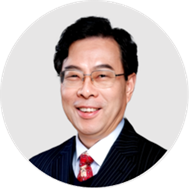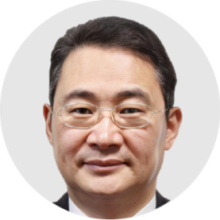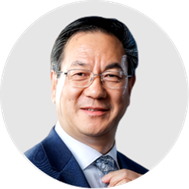Plenary Speaker

Yinbiao Shu
Academician of the Chinese Academy of Engineering
Biography
Yinbiao Shu, Academician of the Chinese Academy of Engineering, Chairman of the China Society for Electrical Engineering, and the 36th President of the International Electrotechnical Commission (IEC). Engaged in long-term strategic development of energy and power, power grid operation and power system planning, as well as major engineering construction and key technology research and development in ultra-high voltage and extra-high voltage transmission. His research achievements have promoted the implementation of the “West-East Electricity Transmission” strategy and the interconnection of the national power grid, facilitating the large-scale development and utilization of clean energy. He has been awarded the National Science and Technology Progress Special Award twice, as well as one first prize, and received the 2018 Guanghua Engineering Science and Technology Award.
Speech Title & Abstract
Advancing the Construction of a New Type of Power System under the “Dual Carbon” Goal
The new power system is the core of the energy internet and serves as a pivotal platform for achieving the “dual carbon” goals. It undertakes two important tasks: first, to achieve its own secure, clean, low-carbon, and efficient transformation, becoming a zero-carbon power system; second, to promote deep decarbonization in energy-consuming sectors such as industry, construction, and transportation through the substitution of electric power, thereby assisting the entire society in achieving carbon neutrality goals. The construction of a new power system requires strengthening the development of four major systems: a complementary clean energy supply system, a modernized power grid system, an intelligent energy use system, and an institutional guarantee system.

Yixin Yu
Academician of the Chinese Academy of Engineering
Biography
Professor Yixin Yu is an academician of Chinese Academy of Engineering, and a professor of Electrical Engineering in Tianjin University. He is an expert on the simulation, analysis and planning of power systems.
He has been teaching and researching in the area of Power System Stability Analysis over several decades. Especially in the security region methodology of power system, he has achieved systematically significant original accomplishments both in theory and practical applications, and for the first time, implemented them into real bulk power grids. At the same time, Prof. Yu and his team have developed a comprehensive set of theory, models and methods for urban power distribution system expansion planning. Based on that, they developed a fully functional Urban Power Grid Planning System software with independent intellectual property rights, which has been used in more than 1000 power grid planning projects in China. The amount of money involved has already be more than 500 billion RMB and huge economic and social benefits are made. As the initiator and active promoter of Smart Grid in China, Prof. Yu has clarified the basic ideas, the necessity and the most important challenges of Smart Grid, undertook many Smart Grid related consulting projects of Chinese Academy of Engineering, hosted the first China Smart Grid forum, and made an important contribution to promote the scientific development of Smart Grid and the implementation of the Smart Grid project in China. Recent years, he has developed a new field of Non-Intrusive Load Disaggregation and Monitoring in China and actively promotes its application into Smart Grid.
He has won the Second Prize of National Scientific and Technological Progress Award, the Second Prize of National Technological Innovation Award, the Ten Colleges and Universities Scientific and Technological Achievement Award, and 5 provincial first prizes. He has published 6 books and more than 300 papers.
Speech Title & Abstract
Layered and Clustered Architecture of Power Grid
The extreme complexity of the future power grid makes the research on the grid architecture very important. It is the topmost level description (model) of the entire grid. Compared with other aspects, the grid architecture comes first. Firstly, the theory of Interconnected Transmission System will be reviewed in this report. Then, the framework of Layered and Clustered Architecture of power grid will introduced in detail. The third part will focus on the mathematical basis of layered and clustered grid architecture and the core idea of “Future grid as smart as the internet” will also be presented. A brief summary is given at the last part.

Zhizhen Ye
Academician of the Chinese Academy of Science
Biography
Ye Zhizhen, an academician of the Chinese Academy of Sciences, a specially appointed professor at Zhejiang University, and a special-grade expert in Zhejiang Province, is an expert in advanced semiconductor optoelectronic thin film materials. He was admitted to Zhejiang University in 1977, received his Ph.D. from Zhejiang University in 1987, and joined the State Key Laboratory of Silicon Materials at Zhejiang University in 1988. From 1990 to 1992, he was a visiting scholar at MIT in the United States. He currently serves as the director of the Academic Committee of the School of Materials Science and Engineering at Zhejiang University, the dean of the Wenzhou Institute of Zhejiang University, a council member and director of the Electronic Materials Branch of the China Electronics Society, and an executive director of the 8th Council of the China Society for Materials Research.
His main research focuses on new material technologies such as semiconductor light-emitting displays and energy storage batteries. He proposed the principle of co-doping of p-type zinc oxide and invented the technology, achieving room temperature electroluminescence for the first time and leading in quantum well light efficiency internationally. He was the first in China to develop zinc oxide transparent conductive film technology, which has been well applied in high-efficiency LED devices. He invented new technologies to improve LED efficiency, breaking the world record for perovskite LED efficiency four times. Research and development achievements such as perovskite luminescent materials and zinc-based liquid flow batteries have gradually been industrialized at the Wenzhou Institute of Zhejiang University, contributing to the development of China’s optoelectronic and energy storage industries.
He has won more than 10 science and technology awards, including a national second prize for natural science and five first prizes at the provincial and ministerial levels. He holds more than 150 authorized invention patents, has published five books, and received the second prize for national textbooks. He has published over 600 SCI papers with more than 20,000 total citations and has been selected as a “Highly Cited Researcher in China” by Elsevier for eight consecutive years.
Speech Title & Abstract
The New Energy Industry Needs New Technologies for Safe and Long-duration Energy Storage
Under the guidance of the “dual carbon” goal, new energy storage has become a crucial anchor for the development of the new energy industry. Energy storage systems can help mitigate energy fluctuations, achieve smooth energy output, and stabilize energy supply. They serve as an important means to address the current shortcomings of mainstream zero-carbon new energy technologies. Accelerating the large-scale application of new energy storage technologies has been included in the “14th Five-Year Plan” and is a long-term goal for 2035.
The energy storage industry imposes strict requirements on batteries in terms of safety, cost-effectiveness, and independent intellectual property rights. Zinc-bromine liquid flow batteries, with their characteristics of zero explosion risk, low cost, long lifespan, easy integration, and maintenance, are considered to be highly competitive for large-scale, long-duration energy storage applications. However, related technologies are still in the developmental stage internationally and face various technical challenges such as zinc dendrite formation, zinc passivation, and bromine shuttle. Additionally, in large-scale battery scenarios, the stack system also encounters issues such as high voltage drop, high efficiency loss, and poor mass transfer within the electrodes.
Addressing these challenges, the team led by Zhizhen Ye has developed five core technologies for zinc-bromine liquid flow batteries: precision-controlled energizing bipolar plate technology, ultrafine pore bromine-resistant membrane technology, solid bromine strong electrolyte activation technology, unique flow field pipeline stack design, and integrated sealing technology for preventing blockage and leakage. These advancements mark a solid step towards the industrialization of zinc-bromine liquid flow batteries.

Hong Rao
Academician of the Chinese Academy of Engineering
Biography
Rao Hong, an expert in power system engineering technology, is an academician of the Chinese Academy of Engineering, and the chief technical expert and chairman of the Science Research Institute of the Southern Power Grid Company. He graduated from Huazhong University of Science and Technology with a major in power systems and their automation in 1983. In 2011, he was recognized as a national outstanding science and technology worker. In 2016, he received the Ho Leung Ho Lee Foundation Science and Technology Progress Award. In 2017, he was selected as an outstanding talent in the “Guangdong Special Support Plan.” In 2020, he received the Second National Innovation First Award, and in 2021, he was elected as an academician of the Chinese Academy of Engineering.
Speech Title & Abstract
Development and Prospects of the Main Grid Structure of the Southern Power Grid
Introducing the three historic transformations of the main grid of the Southern Power Grid, including the Yunnan asynchronous interconnection, the Kunliulong hybrid multi-terminal flexible direct current application for multi-DC grid feeding, and the Guangdong East-West partition flexible interconnection. Looking ahead, it showcases the support of flexible direct current for high-proportion new energy access in the new power system and demonstrates the experience and innovative development concept of the main grid layout of the Southern Power Grid.

C.Y. Chung
Fellow of the Canadian Academy of Engineering
Biography
Prof. C.Y. Chung is the Head of Department and Chair Professor of Power Systems Engineering in the Department of Electrical and Electronic Engineering at the Hong Kong Polytechnic University (HKPolyU), Hong Kong, China. Before re-joining the department, Prof. Chung was the NSERC/SaskPower Senior Industrial Research Chair in Smart Grid Technologies, and the SaskPower Chair in Power Systems Engineering at the University of Saskatchewan, Canada. He was a prominent leader for advancing academic activities and applied research in power systems engineering development in the province. He led a research team, supported by SaskPower and NSERC of Canada, to conduct cutting-edge and long-term smart grid research for SaskPower and address critical technical issues associated with smart grid technologies and their applications to real power systems.
Prof. Chung has been very active in professional societies. He is the 2014-2015 IEEE PES President-Elect. He was the Member-at-Large (Smart Grid) and Member-at-Large (Global Outreach) of IEEE PES Governing Board, the IEEE PES Region 10 North Chapter Representative, and a member of IEEE PES Fellow Evaluation Committee. He has been a Senior Editor of “IEEE Transactions on Power Systems”, a Consulting Editor of “IEEE Transactions on Sustainable Energy”, a Vice Editor-in-Chief of “Journal of Modern Power Systems and Clean Energy”, and a Subject Editor of “IET Generation, Transmission & Distribution”.
Prof. Chung is a Fellow of the Canadian Academy of Engineering, a Fellow of IEEE, EIC, IET, HKIE, and AAIA, and an IEEE PES Distinguished Lecturer. He is also the recipient of the 2021 IEEE Canada P. Ziogas Electric Power Award and 2021 Saskatoon Engineering Society (SES) Educator of the Year Award.
Speech Title & Abstract
Advanced Prediction Techniques Applied to Smart Grids With High Penetration of Renewables
In 2015, countries around the world reached the Paris Agreement and began reducing emissions as soon as possible to deal with the increasingly prominent issue of climate change and achieve the goal of carbon neutrality. Many countries, including China and the USA, have proposed national strategies to strengthen power grids to facilitate major government initiatives, such as increasing the penetration of renewable energy and electrifying transportation and other industrial and commercial sectors. At the same time, power system industry is shifting towards a new digital era to better manage risks in volatile energy commodities, increase customer engagement, and enhance efficiency through grid optimization. Data analytics plays a vital role in this transformation and, therefore, different measurement architectures have been used and implemented to facilitate the data capturing process and supervisory control at the generation, transmission, and distribution levels. Based on the massive measurement data, advanced prediction techniques driven by artificial intelligence will bring revolutionary changes to the power industry. This speech will briefly introduce advanced prediction techniques and review the recent results on some smart grid challenges addressed by novel prediction techniques.

Wen Ling
Academician of the Chinese Academy of Engineering
Biography
Professor. Ling is currently a member of the Party Leadership Group of Shandong Provincial People’s Government, President of Shandong Association for Science & Technology, Chair Professor of Shanghai Jiao Tong University, Chairman of the Committee on Engineering and Environment of World Federation of Engineering Organizations (WFEO), Director of the Management Consulting Committee of China Enterprise Confederation.
Professor. Ling has previously served as the President and Chairman of China Shenhua Energy Company Limited; Deputy Secretary of the Party Group of the Communist Party of China in Shenhua Group and General Manager of Shenhua Group; Vice Governor of Shandong Province; Delegate to the 19th Congress of the Communist Party of China; Member of the 13th Political Consultative Conference of the People’s Republic of China; Deputy to the 12th Congress of the Communist Party of China in Shandong Province; Delegate to the 13th and 14th People’s Congresses of Shandong Province; Vice President of the systems Engineering Society of China (SESC) and Vice President of the Chinese Energy Society (CES) , etc. Professor. Ling is a pioneer among China’s first generation of doctoral and postdoctoral scholars in systems engineering, and has been committed to applying system engineering theories to solve major engineering problems. He has been awarded National Prize for Progress in Science and Technology several times, the Gold Medal of the China Excellent Industrial Design, and the National Award for Outstanding Contribution to Industry-University-Research Cooperation. He is the chairman of the China Hydrogen Energy Alliance (CHEA) and the first chairman of the board of directors. Professor. Ling has also won the National model worker, National Financial Model Worker and National Outstanding Postdoctoral Fellow of China.
Speech Title & Abstract
Exploration and Practice of Zero-carbon Intelligent Highway

Zhonglin Wang
Foreign Member of the Chinese Academy of Sciences
Biography
Dr. Zhonglin Wang is the Director of the Beijing Institute of Nanoenergy and Nanosystems, Dean of College of Nanoscience and Technology, University of Chinese Academy of Sciences, and Regents’ Professor and Hightower Chair at Georgia Institute of Technology. Dr. Wang pioneered the nanogenerators field for distributed energy, self-powered sensors and large-scale blue energy. He coined the fields of piezotronics and piezo-phototronics for the third generation semiconductors. Among 100,000 scientists across all fields worldwide, he is ranked #1 for single year scientific impact continuously for 2019-2022, , #2 in career scientific impact; and #1 in Materials Science. His google scholar citation is over 400,000 with an h-index of over 300.
Dr. Wang has received the Global Energy Prize (2023); The Albert Einstein World Award of Science (2019); Diels-Planck lecture award (2019); ENI award in Energy Frontiers (2018); The James C. McGroddy Prize in New Materials from American Physical Society (2014); and MRS Medal from Materials Research Soci. (2011). Dr. Wang was elected as a fellow of the US National Academy of Inventors in 2022, foreign member of the Chinese Academy of Sciences in 2009, member of European Academy of Sciences in 2002, academician of Academia of Sinica 2018, International fellow of Canadian Academy of Engineering 2019. Dr. Wang is the founding editor and chief editor of an international journal Nano Energy.
Speech Title & Abstract
Triboelectric Nanogenerators for Energy and Self-powered Sensors
Triboelectric nanogenerator (TENG) was invented by us in 2012, which is based on coupling of triboelectrification and electrostatic induction effects for converting mechanical energy into electric power. TENG is playing a vitally important role in the distributed energy and self-powered systems, with applications in internet of things, environmental/infrastructural monitoring, medical science, environmental science, and security. In this talk, we first present the physics mechanism of triboelectrification for general materials. Our model is extended to liquid-solid contact electrification, reviving the classical understanding about the formation of electric double layers. Secondly, the fundamental theory of the TENGs is explored based on expanded Maxwell equations for a mechano-driven system. We will present the applications of the TENGs for harvesting all kind mechanical energy that is available but wasted in our daily life, such as human motion, walking, vibration, mechanical triggering, rotating tire, wind, flowing water and more. Then, we will illustrate the networks based on triboelectric TENGs for harvesting ocean water wave energy, for exploring its possibility as a sustainable large-scale blue energy for humankind. Lastly, we will show that TENGs as self-powered sensors for actively detecting the static and dynamic processes arising from mechanical agitation using the voltage and current output signals.

